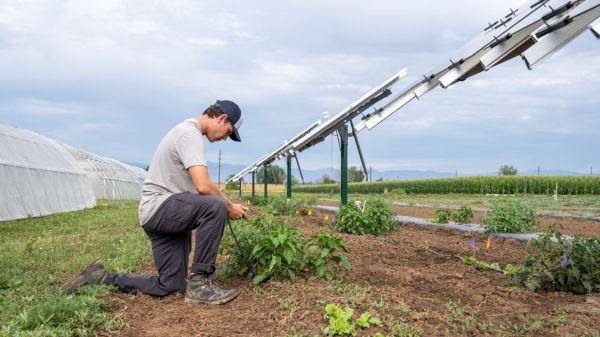On a stretch of cultivated land at the CSU Horticultural Field Research Center, a neat row of solar panels towers over small plots of lettuce and other vegetables. The gentle shadows that cast over the mini gardens are no accident. They’re part of a carefully controlled experiment testing whether specialty crops like tomatoes, peppers, and kale can grow in, or even benefit from, close proximity with solar energy generation.
The research is a collaborative effort between Mark Uchanski, associate professor in Colorado State University’s Department of Horticulture and Landscape Architecture, and Sandbox Solar, a Fort Collins solar energy startup with offices in the CSU Powerhouse Energy Campus. The team is supported by a grant from the U.S. Department of Agriculture’s National Institute of Food and Agriculture.
Awarded earlier this year to Sandbox Solar, the Small Business Innovation Research program grant is supporting a market study evaluating whether integrating photovoltaics into horticultural spaces – a burgeoning field known as agrivoltaics – would be a cost benefit to farmers and growers. To bring scientific validation to the premise, the Sandbox Solar team recruited Uchanski, who heads CSU’s specialty crops research program, to partner on a controlled study of vegetables grown underneath and around different types of solar panels. USDA-designated “specialty crops” include fruits, vegetables, tree nuts and various nursery crops and flowers.
Continue reading at Colorado State University
Image via Colorado State University


